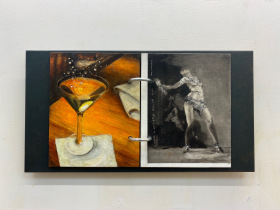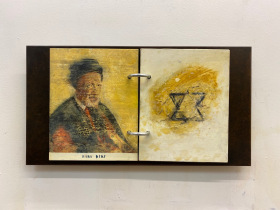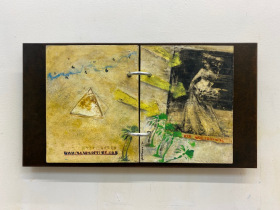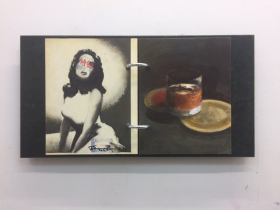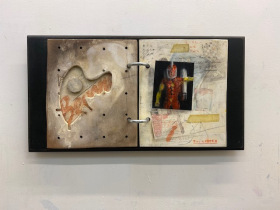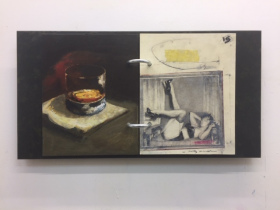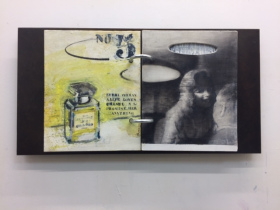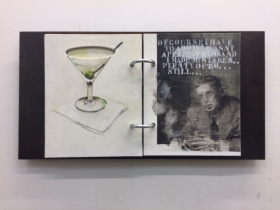Bruce Thurman
Bruce Thurman was born in Chicago, studied architecture at the University of Illinois and went on to study art at the Beaux-Arts School in Paris. Beginning at the age of 23, from 1971 to 1983, he worked as an architect in Chicago (Tigerman), Southern France (Prip-Buus), Paris (Andrault-Parat, Yves Roa) and New York (Lundquist & Stonehill). In 1981, he moved to Paris and began working full-time as a painter. In addition to his artwork, his career spans design projects that include decorative installations in private and public spaces as well as film posters. He currently divides his time between Paris, Chicago and New York City.
As a virtuoso of many techniques, when Thurman describes his paintings he says,
“It’s difficult to have too many different styles going on in the same painting – they struggle with each other… but if you take that same painting, cut it half and hang them side by side, it works fine. The notebooks are a way of allowing maximum variety of expression. I can go from photo realism, to abstract expressionism, to gesturalism, to minimalism.”
Themes vary from the nostalgic characters of old detective films, glamorous pin-up girls, sports heroes, scenes of French café life to mundane objects. In Thurman’s hands, they are not only autobiographical but they also invite the viewer to delve into their own ‘notebook’ of memories.
Notebooks
Third Edition 2020
After a hiatus of more than 10 years, I am presently revisiting my concept of “Notebooks” – diptychs in motion (with turning pages creating two paintings in succession) of apparently random subjects which may tell a linear and coherent story and then again, may not. They riff on all subjects that are dear to me at the moment. They become stream-of-consciousness medleys, free associative ramblings. Artistically they owe a debt to the graphics one sees in vintage magazine pages (sometimes with peek-thru cutouts), advertisements and entertainment posters. But in the end, they are just a slice of my interior life – the good, the bad, and the ugly.
“The standardized format of the books (mixed media on wood), offers a neutral surface onto which I stage my little dramas, project memories and vent anxieties. They are make-believe sketchbooks, pasted over and cut up, story-boards with movable pages. Referential in nature and constructivist in process, they could be looked upon as modern day (miniature) diptychs. I try not to plan them out too much in advance or pre-design them. They have an unfinished feel, a grit due to their being themselves both studies and works in progress. In a sense, the notebooks are a parody of the design process itself, a virtual sketchpad that has become my personal narrative.”

